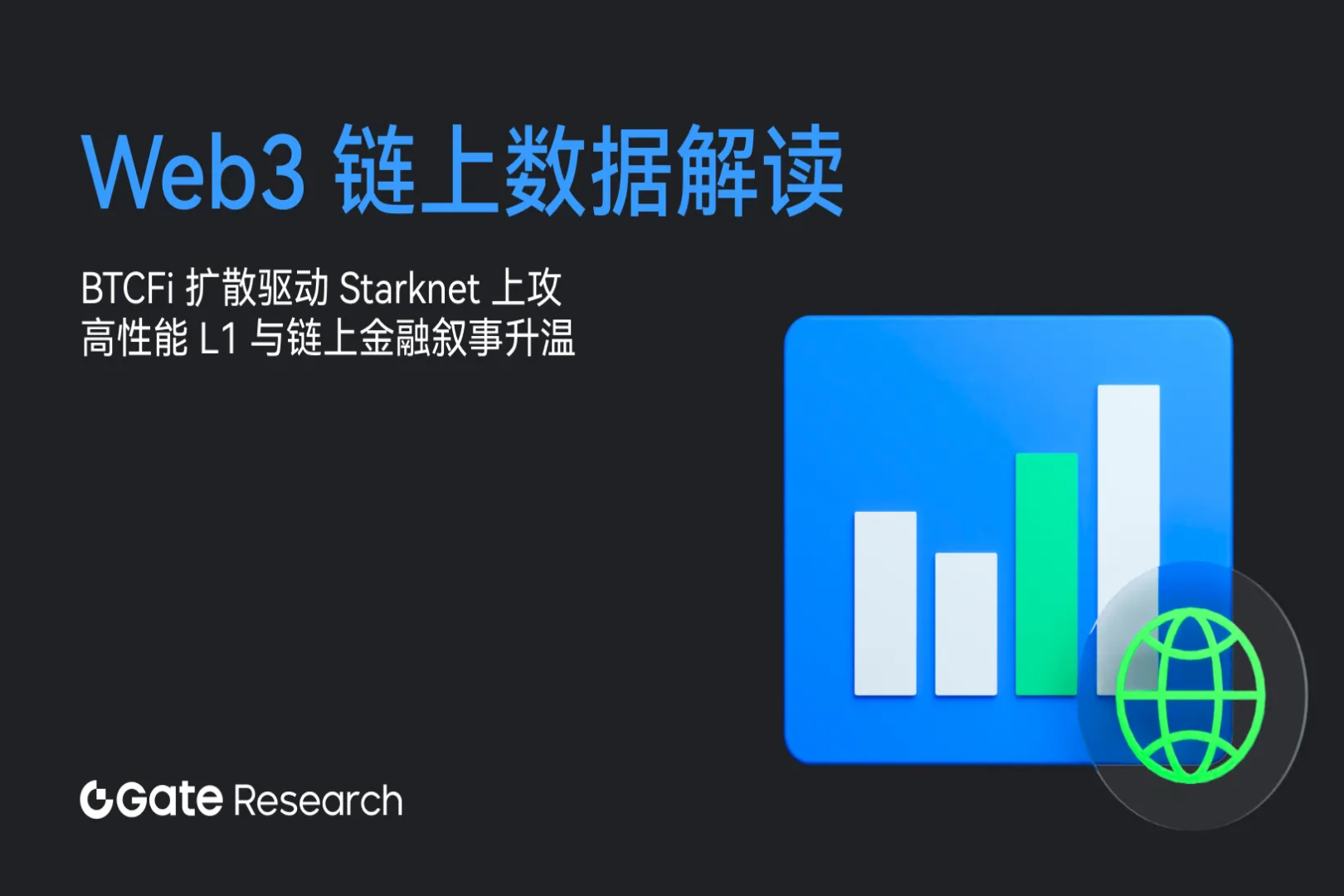From Culture to Product, The Ultimate Guide to Bitcoin Puppets
Original author: KAYLAN SLINEY
Original translation: TechFlow
Bitcoin Puppets, a collection of 10,001 unique PFPs hand-painted in MS Paint by a 12-year-old, has taken Web3 by storm. At the time of publication, its floor price is 0.408 BTC ($26,775).
But what may have seemed to many to be an unexpected, relative overnight success was actually years in the making. Together, we explore the intersection of culture, community, and cryptocurrency.
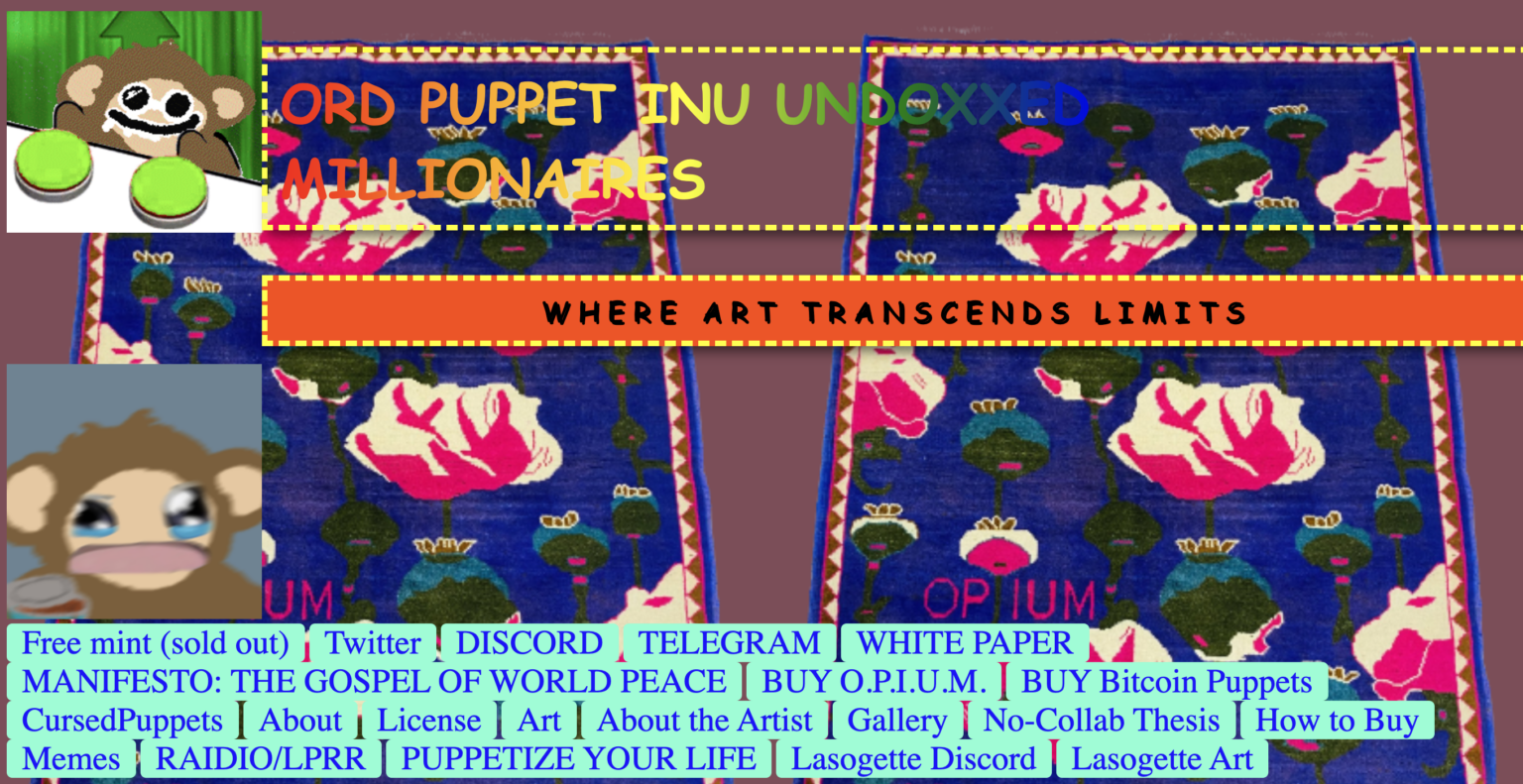
Brief History
To respect the privacy of the project's founder, Le Puppeteer Fou (hereinafter referred to as "Puppet Master"), we will preserve this history like Dunkin' Donuts coffee: light and sweet.
As the story goes, the Puppet Master has been an artist for many years, previously leaning more towards abstract portraiture. He and a few key Puppets first met on the Wassies by Wassies Discord server during the original heyday of Ethereum NFTs (Non-Fungible Tokens). Subsequently creating their own private chat, this growing friendship collective became the foundation of the community we now know and love.
Prior to creating Bitcoin Puppet, Puppet Master had already produced collectibles such as Lasogette, an artistic aesthetic made of 7,777 generated PFPs, issued on the Ethereum network, and Ord Puppet Inu Undoxxed Millionaires (OPIUM), an esoteric and absurd collectible composed of 7,777 generated PFPs, which were issued as OrdinalsNFTs.
One reason OPIUM is widely considered to be the predecessor to Puppet is the similarities between the two collections. But it turns out that the aforementioned famous private Discord also had some fantastic contributions to each collection.
For example, everyone in the chat could submit text for a logo held by the OPIUM puppet, resulting in characters like “Thicc Goddess Connoisseur,” “Hustlin Apothecary,” and “Digital Prophet.”

Design puppets
The “Puppeteer” continues to engage his community when designing the features of the Bitcoin puppets. In the process, he remains true to the pure whimsy, sheer creativity, and patented absurdity of the original OPIUM collection.
Here are some examples:
two chairs t-shirt trait is an evolution of the puppet's "KomUNiTy MaNAgEr" W 4 nkpire submission by Michael Saylor about the " How many chairs are you sitting on? " retoristic about going all in on Bitcoin, with the puppet master adding a twist by turning one chair red and the other blue (a reference to the choice between outcomes in The Matrix).
The pink pipe trait is a reference to the work of BennyTheDev , who began developing the PIPE protocol after releasing $TRAC, which some members of the Discord group began calling "trac pipe" (a reference to "crack pipe").
The "coffee time" mug feature in the Muppets originated from a vignette similar to the classic "What I Ordered vs. What I Got." OG team member Hillshills ordered a physical mug that said "Rise and Grind" to go with her favorite OPIUM feature. After a long and painful delivery process, she ended up receiving a mug that disappointingly said "Coffee Time." But a new legend was born.
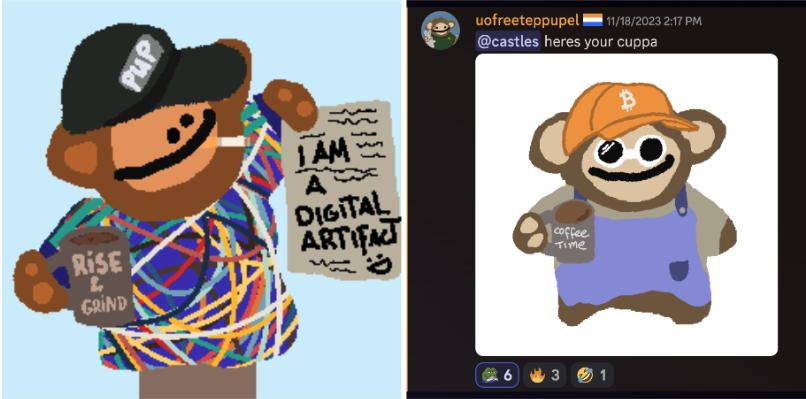
First casting
The puppet casting started on InscribeNow on January 3rd. Despite the quick casting (some suspect bot activity), public reaction to the art was decidedly divided. Even among the backers there was a split: some supporters absolutely loved and resonated with the art of the collection (including the cursed puppets), while others may not personally appreciate the fringe aesthetic but recognize that there is something special about the collection. Those who objected were unabashedly critical of it.
However, the polarization of opinion only seemed to fuel the fervor among believers. Early community members doubled down on their efforts, buying more collectibles en masse, while the FUD-mongers continued to lurk on social media and infiltrate X’s Space.
But the puppet’s price continued to rise, encountering few setbacks along the way, leaving nonbelievers far behind.
But is this so surprising?
Puppet Manifesto
Web3 is both an evolving and unpredictable space, and susceptible to relentless “copy-paste.” Because so many PFP projects want to “get it right,” they more often copy elements of what has failed before.
Often, PFP projects are framed and marketed as representing a "community" when the real community has not been given sufficient time to be identified, curated, or nurtured. Ten thousand strangers buying an image and expecting the "numbers to go up" does not constitute a community. Some groups are able to find their common ground and unite, and with enough attention, resources, and effort, may be able to build some momentum. However, many other groups are just diluted cash, weighed down by unfulfilled promises and unmet expectations.
The Puppet Master flips that narrative on its head. There are no roadmaps, no promises, no board of directors. He neither steps into the spotlight nor disappears into the void. He simply positions himself as a steady, supportive presence, allowing holders to form the connections that best suit their art and each other. If you pay a little attention, you’ll find cleverly placed Easter eggs, like the middle-finger cursor on the website or the poetic quirks of the OPIUM whitepaper, that serve as gentle reminders not to take ourselves too seriously.
This complete and total ban on expectations means that everything going forward will be purely organic, community-driven, and full of surprises and delights.
Let’s not forget the original teams, who spent years building relationships, forming sticky narratives, and amassing a wealth of lore. Their emotional investment in the founders, the project’s identity, and each other means that the scaffolding of the community is already in place when “outsiders” join. Relying on a narrative that ultimately boils down to “no expectations” between each other, newcomers are warmly welcomed, but they never seek validation.
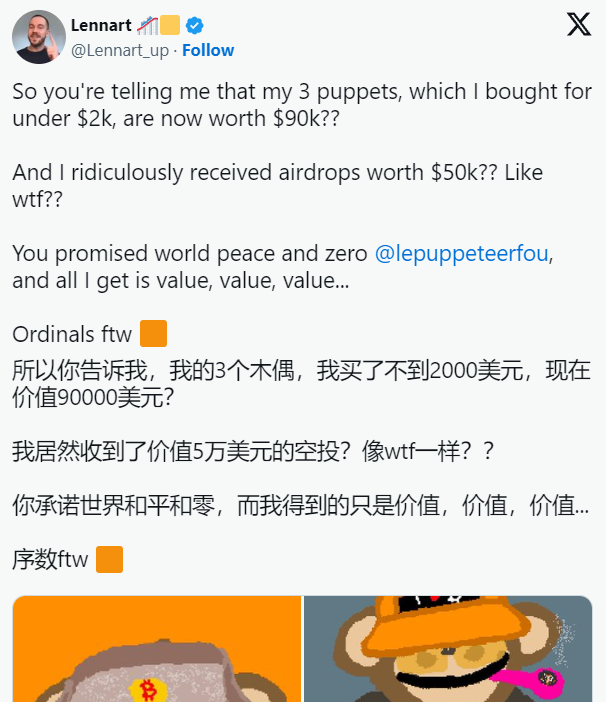
Let them return to zero
As the hunger for puppets seems endless, an apparently counterintuitive motto echoes through the halls of X: “Send them to zero.” Maybe it sounds like a sarcastic call, but it’s actually a friendly reminder that we’re all on this train, and it’s going to end. This is the only place on the internet where objective success is considered failure.
Even as prices soar, the oft-repeated phrase “I was promised zero! ” serves as a reminder that the Muppets expect nothing from their holders: just art, fun, and good vibes. When they finally go to zero (as all things do), one can only hope they enjoyed the ride.
No cooperation, but many derivatives
Puppet is subject to the VPL (Viral Public License), which is similar to the more familiar CC0 (Creative Commons zero) license. The VPL copyleft means that anyone can use this work at any time for their own purposes and creative pursuits, including products and derivative projects.

Puppet Master firmly supports the “no collaboration theory” to avoid compromise, dilution and commodification of art.
However, he not only allows, but encourages wider use of the Puppet intellectual property under the VPL. In their short-lived public ecosystem, Puppet has been spawned by countless derivative works. Some of the most similar collections so far include: 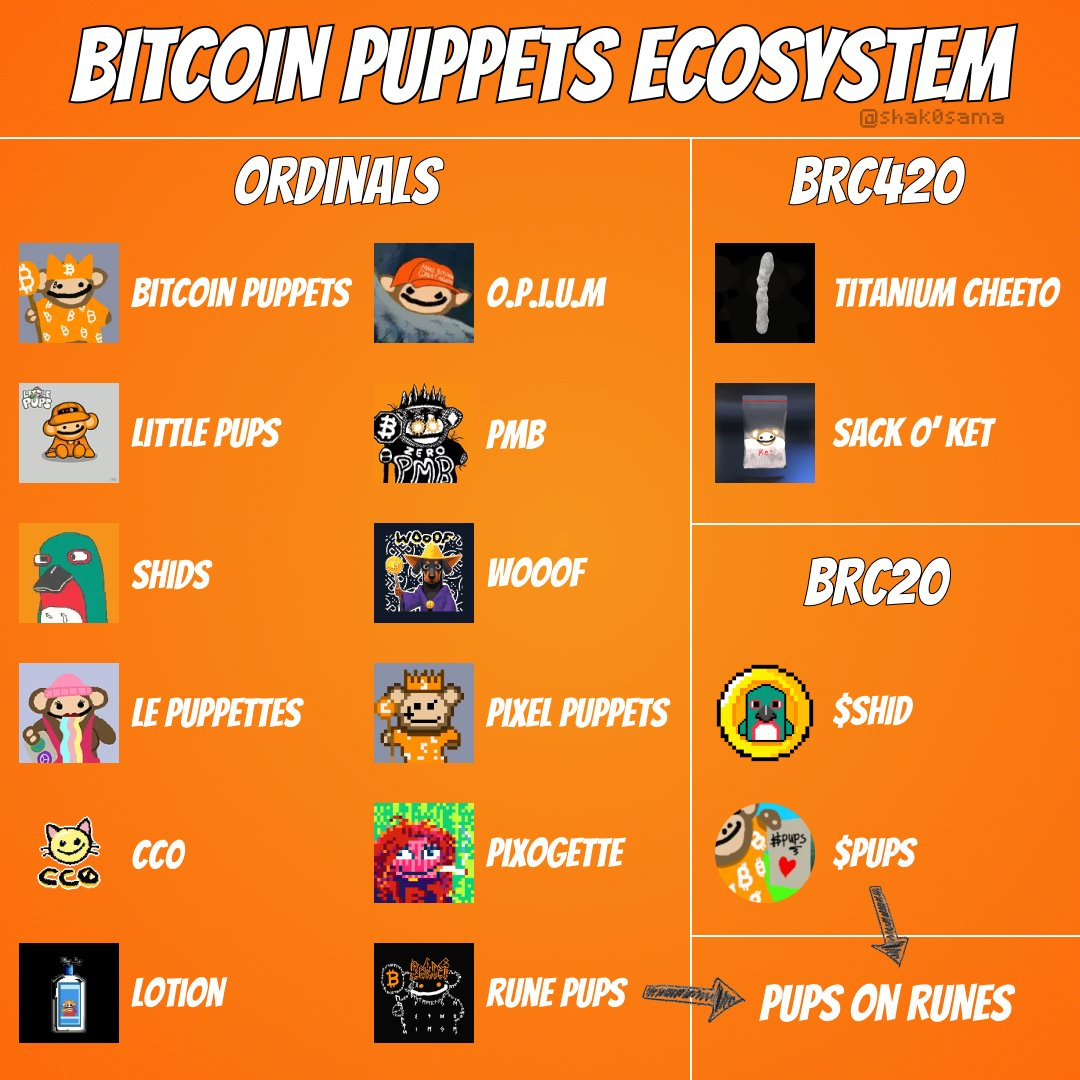
Each new spinoff is exciting because it promises to add to the lore of The Muppets:
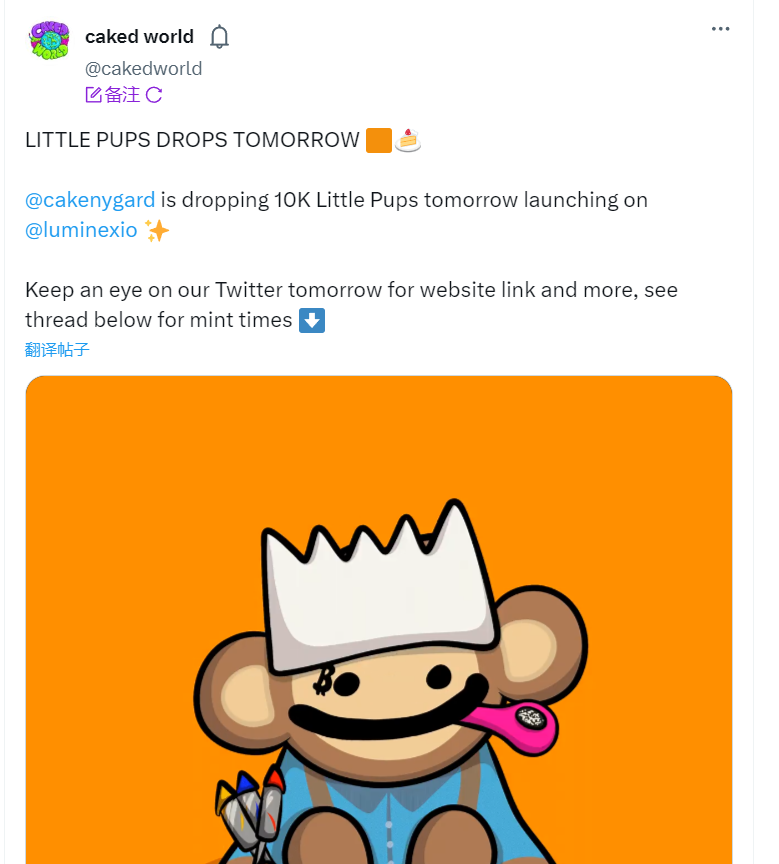
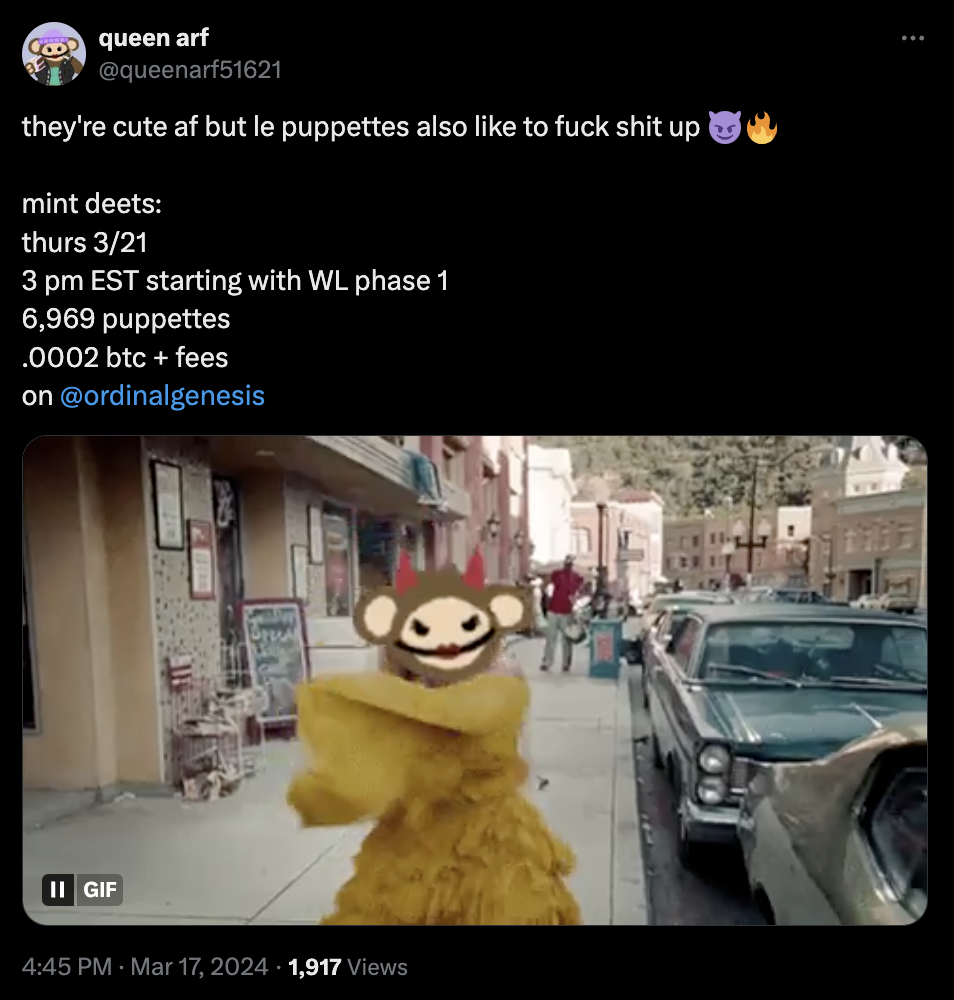
A collection of memes, products and playlists
Puppets have been frequently memed, merchandised, embellished, and made into playlists (and even albums) - all with great enthusiasm from the puppet masters and the community at large. The collection has even inspired an AI-syndicated radio station (called "RAIDIO") created by Lukas Kalmar called Puppet PR Radio .
Community activity extends beyond just making the world’s best memes and printed merchandise (although stickers are particularly awesome). Members have gathered around the world at venues like ETH Denver, NFT.NYC, and are planning to attend Bitcoin 2024 in Nashville, Tennessee. 
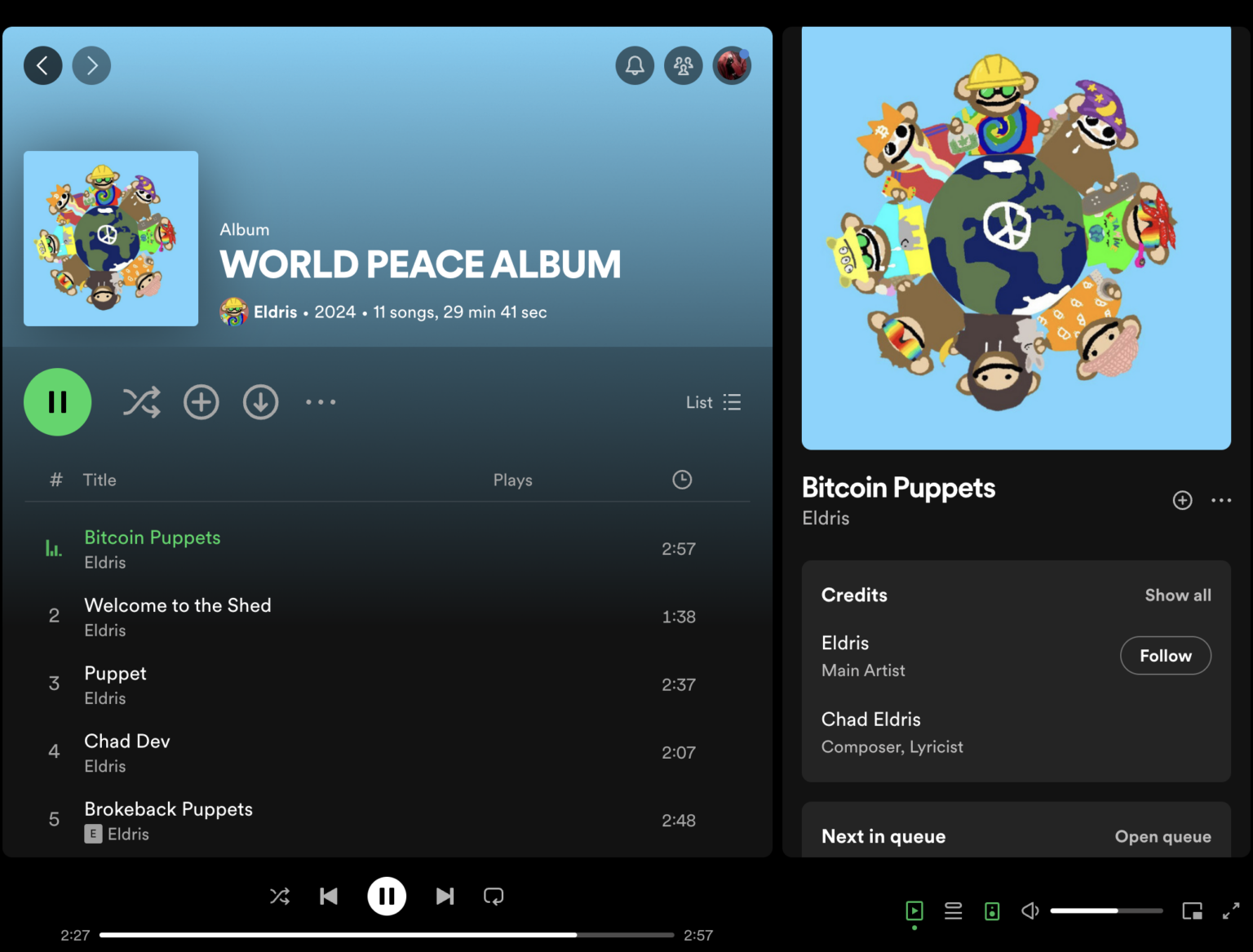
Honorary Title
While Puppet Master has made it very clear that he has no interest in "running the project" in the traditional sense, we can't help but notice how passionately he supports and participates in the community.
Puppet Master has created a growing collection of 1-for-1 puppets to honor individuals he believes have contributed to the puppet community and/or the blockchain space as a whole, including Casey Rodarmor, creator of the Ordinals, and personalities like DeeZe and ThreadGuy.
Most of these puppets are custom-made and crafted as tributes to their intended recipients, but a small number are made without a recipient in mind but eventually find their rightful owners. Recently, the Puppet Master announced a series of new honors at X, including custom puppets for Ansem and BGS.
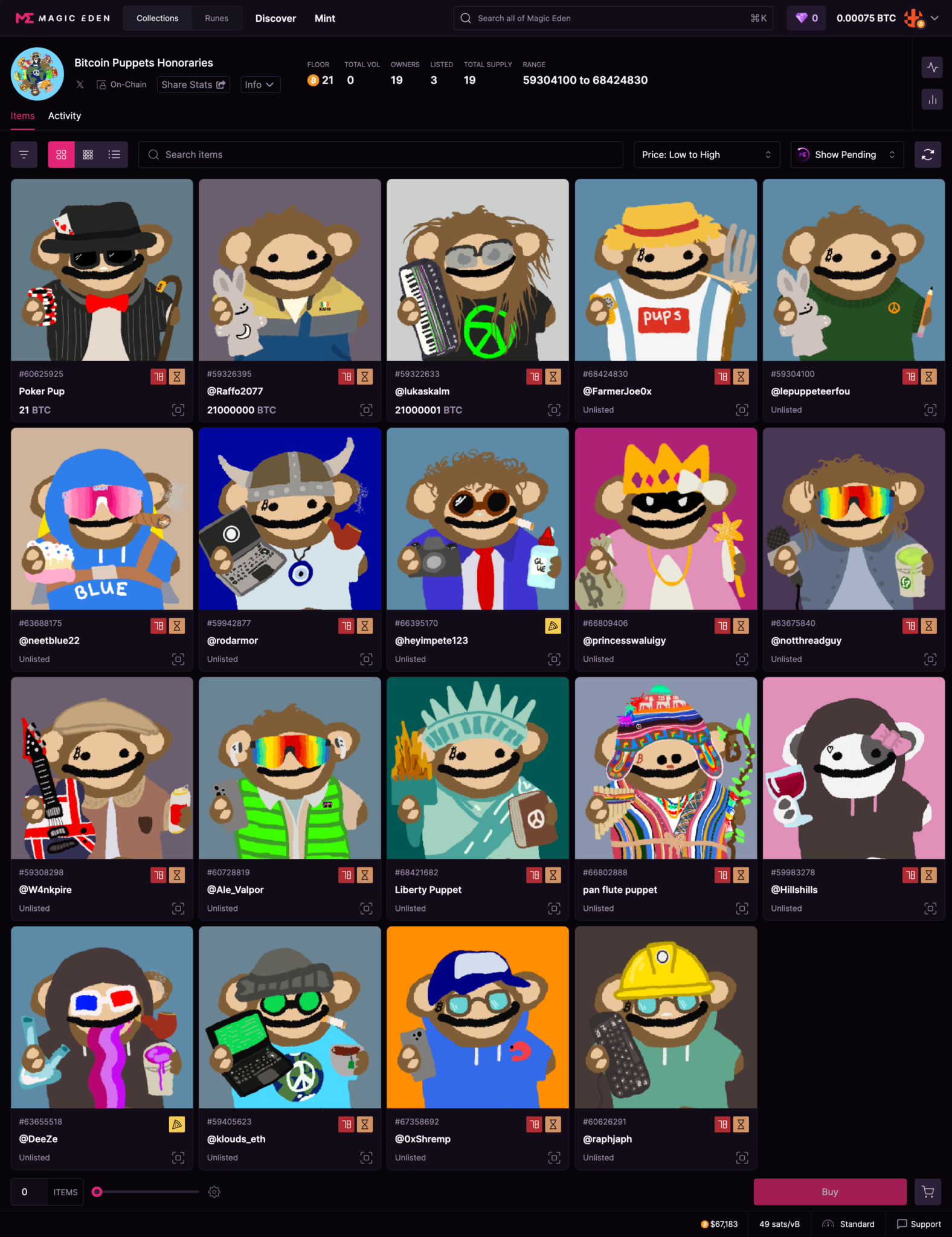
$PUPS
The power of the puppet has spilled over to fungible tokens. $PUPS was launched as a meme coin that promised no roadmap, no utility, only memes. Initially a BRC-20 with a Solana bridge, $PUPS hopes to migrate to the Rune Network at the halving on April 19th, with the token PUPS•WORLD•PEACE.
While this project is not affiliated with either OPIUM or Bitcoin Puppet, it has been incorporated into the ecosystem and has been welcomed by the Puppet community. In honor of early Puppet holders, a collection called "Rune Puppets" (more commonly known as "Rune Puppies") was airdropped to Bitcoin Puppet holders on March 17, 2024.
A portion of the PUPS supply (22.3%) is reserved for distribution to Rune Puppies during the migration. Holders are airdropped one of two rarity tiers, common or rare, with rare Rune Puppies receiving a multiplier bonus, and the remaining supply (77.7%) will be distributed at a 1:100 ratio between BRC-20 and Solana bridge token holders.
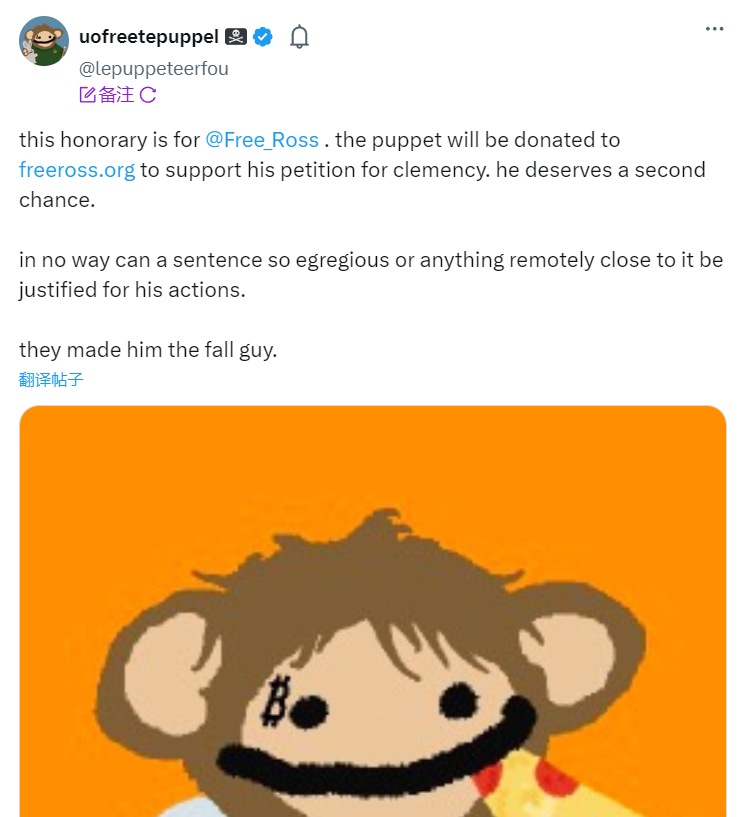
Conclusion
Centered around pure intentions, puppet culture offers an artistic expression that reflects the volatility and sometimes patent illogicality of financial activity in the cryptocurrency market. While they are not without their naysayers, or some who might consider their art vulgar, puppeteers proudly defy traditional categorization and celebrate their creativity and (counter)culture. By the way, they still want world peace.
At the time of writing, the puppets are just three months old. In human years, it's just a baby barely holding its head up in the belly, but in cryptocurrency years, it's already an anxious teenager. There will inevitably be twists and turns in the coming bull bubble, but as a project that has already created a group of millionaires from the "no expectations" crowd, people should be more grateful.
It will be very interesting to see how this collection and community continue to grow together (or apart).


